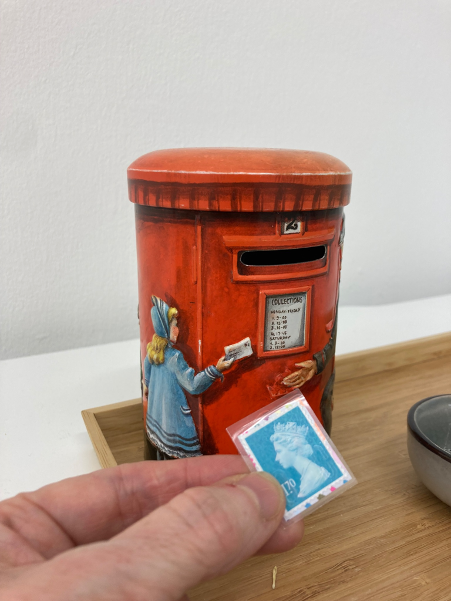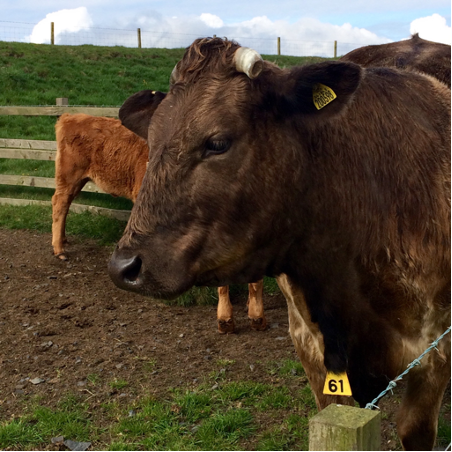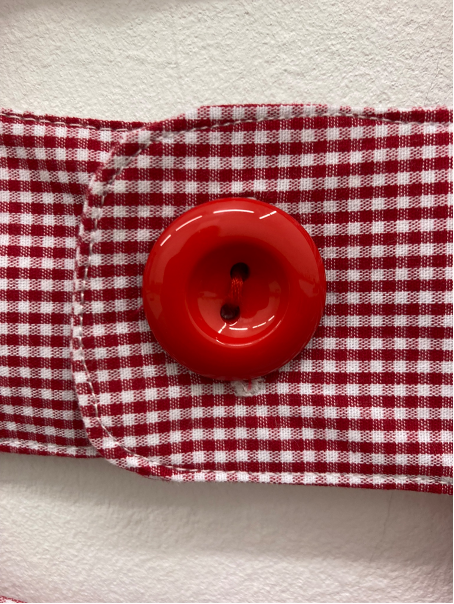fiona wood
Enjoy this delightful read featuring memories of a childhood spent in the English countryside and an educator’s dedication to supporting the needs of young families from Vienna’s local and international communities!
Thanks for chatting with me today, Fiona! Can you first tell me a little about where you were born?
While I was born in North East London, England, as the second child of my parents, my family moved a few times in my childhood. When I was very small we moved to Bedfordshire and before I started school we moved to Staffordshire, the home county of my father and his family. A few years later we moved back to Bedfordshire where I then spent the rest of my formative years and so it is to these two areas in which my roots are most closely tied.
As a very young child I remember our typically Victorian house set on the edge of town with rolling hills surrounding us. Cows used to come to the fence at the end of the garden whenever we ventured out. The winters were often quite cold. The cows would lick our hands and the steam would come off their tongues and out of their mouths as they breathed heavily. I was so impressed by the contrast of the gentility and strength of these beasts, and still have a love of cows today.
Another memory is that of a giant, elaborately formed metal gate covered with metal leaves and flowers. This was always covered in cobwebs and it marked the entrance to a private road on our street. The bus stop was just outside of it and on cold frosty mornings the cobwebs would turn into a magnificent glistening structure like the decorations of an intricate palace. I would lose myself in them as I explored the patterns of the ice while we waited for the school bus. It was a magnificent show of nature’s beauty. Every year there would be snow and we would set off into the hills surrounding our house with our sledge, donning welly boots and jeans, sledging down the hills until we were wet through and had to head home. On snowy winter days, the schools would often close and the electricity would often fail. On these dark evenings we would light candles and listen to old records on my father’s wind up gramophone.
In our front garden we had what seemed to me to be a giant weeping cherry tree. In the spring it would be covered in blossoms and I would retreat inside with a few toys, a book and perhaps some provisions to hide away. It was like a secret world under there and with hindsight I imagine I sought solitude and independence as the youngest child in the family. The spring also brought to life the vibrant yellow flowers of rape and turned the hills into a patchwork of colours. I love observing this magnificent transformation whenever I make it home to England, even to this day.
I also remember lots of walks with our dog in the forest, along canal tow-paths, watching the boats rise and fall in locks and visiting roman ruins. Our family had an English heritage membership for a few years that we definitely made use of.
How did your interest in travel begin? Please tell us a little about how you arrived in Moscow?
My father had the great luck to travel for his work throughout the world. He made friends wherever he went and always brought back a gift for us. Normally this was one of the small plastic dolls found in tourist shops throughout the world in the 80´s, dressed in the traditional clothes of the county he had visited. After a few years we had quite a collection! He would also bring decorative items, clothes, wooden boxes, chocolate bars, pottery and so on. There would always be a few coins and maybe paper money to examine with intricate drawings and writing in unknown alphabets. There were postcards with stamps, images of foreign lands and postmarks that would arrive sometimes before or after his return. In essence we had our own “continent boxes”, though that concept was something none of us had yet met.
Later on we began to go on small family holidays. Our first and grandest was a three week trip to the USA where we traveled mostly thanks to the air miles and hotel points my father had collected from his work trips. We visited Washington, LA, Niagara Falls, Disneyland, Hawaii, and New York among other places, meeting my father’s friends along the way, taking hundreds of photos on a small 35mm automatic camera I had been given as a gift. After that we visited many places in Europe, often only with flights booked and a map. We would hire a car and drive around finding places to stay as we went. This was my introduction to independent travel and showed me how you could normally land on your feet with a few phrases of the local language that we were always encouraged to learn, a map and a smile.
It was my father’s work also that led me to Moscow. He began to work there in the late 80´s/early 90´s, and the things he brought back from his time in Moscow for our “continent box” sparked the greatest interest inside me! However much I learnt about this place I always wanted to learn more. We traveled as a family there for the first time for New Year when I was about 10 years old. I was then even more fascinated by the culture I discovered. I went on to study Russian Studies at the School of Slavonic and East European Studies in London, after which I got a job as a governess in Moscow for several years. After a brief period of working as a translator I went back to working with small children, married and had my first daughter. She brought me to Montessori as we discovered a wonderful programme there which she loved.
And now you are based here in Vienna! We would love to learn more about the delightful program that you have developed here!
When my second daughter was born here in Vienna I had only recently completed my Montessori training and I didn’t want to forget what it was all about. We wanted to create a Montessori inspired play space where parents could meet while their children played. Not long after, the pandemic arrived and this forced us to re-evaluate what we were doing. We saw that there was a need for a Montessori parent-child space where families could come together in small groups to be with each other and the children could benefit from the many things a Montessori environment has to offer. And so our current programme was born. We now have parent-toddler classes and a Nido group for babies regularly throughout the week. Some people come to us once a week, others more frequently. The toddlers are free to explore the environment for 2.5 hours with the support of a trusted caregiver nearby and our teachers on hand to offer guidance whenever needed. We have a room dedicated to encouraging children to refine their gross movement skills too.
Like all Montessori spaces, the rooms are constantly evolving to offer experiences to the children who join us with whatever they are interested in at one time and so the shelves never look the same for too long. We share snack time
together and finish the morning with some music and movement. While our classes are in English many of the children speak English as their second or third language and we are a truly international programme.
We’d love to share some of your insights regarding language development in babies and young children.
One of the many challenges facing parents today is the development of their children’s language and literary skills. Over half the world’s population speaks two or more languages and the means by which we communicate with each other is evolving at an immense pace. Consequently our children’s experience of communication is fundamentally different than our own and we find ourselves guiding our children through experiences which are also new to us.
Not only is the way we receive information and share information different but it has never been more essential to be able to filter, question and analyze the information surrounding us and for us to make choices that are right for ourselves. If we want our children to be able to do this we have to be aware of their language environment, their sound experiences even before they are born and the opportunities we give them to practice these skills.
Maria Montessori talked about aiding the construction of children who truly see, hear and feel. The very first step in the language development of the infant is to develop their ear. We can do this in the womb as we talk and sing to our child or those around us, introducing them to the musicality of our language and the sound of our voice, and heartbeat as their ear awakens. After birth we can train the eye giving them a varied visual experience. Maria Montessori developed the mobile series for just that helping to awaken the infant to the environment into which they have been born.
Most importantly, we must be a model for our children, provide them with a rich language environment full of songs, music, stories both told and read and most importantly, conversation. Our children need us to talk to them, to hear their first sounds and respond, to talk to them about their daily life so they can learn all the names of the things surrounding them, be it the hairbrush and sink in the bathroom or the trees growing outside their bedroom window. When we slow down to hear our children they listen to us and their language explodes.
Then, we must be good listeners, listening to their first sounds, words, opinions, thoughts and feelings and showing them that they are valid. They are an individual with the right to a voice and opinion even if this starts first as a baby trying to say ‘uh’, a toddler saying ‘red shoes’ or an older child explaining why they really don’t want to go to ballet anymore. Listening to children boosts their self-esteem and confidence in ways that are truly empowering at every stage of development.
One of the greatest gifts we can give our children is the ability to share thoughts in a precise, conscious way; to be able to express ourselves and be understood by others is wonderful and essential for children to lead a fulfilled life.
Modern life has brought many conveniences to parenthood but they are often more for the benefit of the companies producing them rather than for the benefit of the child. We see more and more children who face challenges in speech development and there are several everyday items that confound these. The overuse of pacifiers delays the development of the muscles in the mouth making it harder for children to pronounce words, the same goes for anti drip water bottles which is why as Montessorians we prefer to offer the child water from a small glass or tumbler whenever possible. And of course breastfeeding also aids in the development of the child’s mouth.
Modern day prams and carriers have also revolutionized our lives as parents. There is a solution for taking your child wherever you want to go, be it to the heart of a city or the top of a mountain, experiences which can only enhance our children’s lives. For language development though it is essential to be aware of the time that our children spend in prams or carriers. It is so important we make sure that they can see our faces and we can see theirs as much as possible. This provides so much opportunity for us to interact with our children. They can see our mouths and absorb how we produce sound and pronounce words, hear our conversations and interactions with others, see our facial expressions and body language.
Just as importantly, we lose the chance to catch a glimpse of our children’s interests, for example, the cat that walks by, or the digger they point to, or the bicycle in the shop window that looks like Daddy’s. Whenever our child reacts, points, smiles, or frowns at something we can verbalize their experience, helping them to put words to their thoughts and feelings. All this opportunity for learning is lost when we cannot see each other. I highly recommend that parents keep their children facing towards them for as long as possible. They never get bored looking at our faces, I can assure you, as long as we are connected and engaging with them.
The hottest topic of today is still that of screen time of course. Without doubt, neurologists have confirmed that before the age of six children benefit from not having screen time at all. Cartoons do not help children learn languages until they are already able to communicate by themselves. They need to learn how to use their mouths, the dance of conversation and the art of listening and this can only be done through having conversations and observing the conversations of others. So inviting friends round for tea, meeting with others in the park and talking or just taking a child paced walk and talking about what you see along the way will always be a much better aid to your child’s language development than using any device.
As we both know, books can also play a large part in a child’s language development. Can you recommend some books from your own childhood, Fiona?
My favorite books from when I was a child (which I now enjoying sharing with my own children) include the following:
Topsy and Tim series
Judith Kerr’s Mog series
The Tiger Who Came To Tea, also by Judith Kerr
Shirley Hughes’ delightful Alfie books
The Flower Fairy books by Cicely Mary Barker, which help me remember and pass on the names of so many flowers to my children
poems by AA Milne, which often make us laugh.
What a great conversation this has been! Thanks so much to Fiona Wood for taking the time to share some of her expertise with us. You can learn more about her engaging program Dugu, at the following link:





